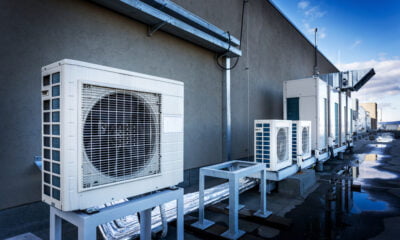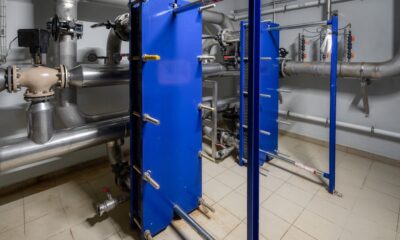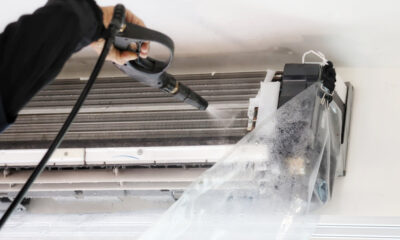

Energy
New research aims to improve energy efficiency of 1950s homes
Solid wall homes from the 1950s could become more energy efficient if new research, which is set to be tested in Northern Ireland, is successful.
The project outcome will be relevant for many of the 6.9m solid wall homes across the UK. The S-IMPLER project, also known as Solid Wall Innovative Insulation and Monitoring Processes using Lean Energy Efficient Retrofit, is designed to help the refurbishment sector achieve effective and economical retrofit of insulation in solid wall homes.
It is estimated that the project will be able to achieve a 60% reduction in monitored energy costs of 1950s solid wall homes, of which there are 300,000 in the UK and 5,000 in Northern Ireland. It is also hoped the retrofit will be carried out with less disruption and completed at least 10% faster than current solutions, with no impact on quality or safety.
The S-IMPLER project is the result of a collaboration between consultancy firm BRE and green heating supplier Carillion Energy Services. It is supported by the innovation agency the Technology Strategy Board and will initially be trialled on seven Northern Ireland Housing Executive (NIHE) homes.
Ross Holleron, associate director at BRE, said, “Our aim, in addition to reducing [homeowners] energy costs is to improve the experience of being retrofitted. We know from previous research that the ‘hassle factor’ is a major barrier to widespread uptake of solid wall insulation in particular.
“By engaging with occupants early in the project we will get a clear understanding of their needs and preference, which can then be built into the delivery approach. In conjunction with this we will be installing real time energy monitoring kits, so people can see the before and after performance of their homes.”
With recent energy price hikes announced by utility companies, energy efficiency is becoming increasingly relevant to the public and as a result becoming more widely considered as a way to cut costs in the long-term.
This is demonstrated by the Passivhaus standard, which aims to maximise the comfort of homes while dramatically reducing energy usage. Whilst the concept is relatively new, with only around 200 complete and certified homes in the UK, within the next two years there are set to be over 1,000 homes with the accreditation.
Looking to the future, Jon Bootland, chief executive of the Passivhaus Trust, previously told Blue & Green Tomorrow that buyers and homeowners are starting to get “switched on” to low-energy homes.
“There was some research last year that showed people expect an energy efficient home to hold its value better and to be worth more in the long-term, so I think homeowners will start to recognise the value of having a very low-energy and energy efficient home”, he added.
“I think that will start to drive the market on the energy efficiency front.”
Further reading:
Passivhaus: maximising comfort while minimising energy
Making your period home more energy efficient: a practical guide


 Environment9 months ago
Environment9 months agoAre Polymer Banknotes: an Eco-Friendly Trend or a Groundswell?

 Environment11 months ago
Environment11 months agoEco-Friendly Home Improvements: Top 7 Upgrades for 2025

 Features8 months ago
Features8 months agoEco-Friendly Cryptocurrencies: Sustainable Investment Choices

 Features10 months ago
Features10 months agoEco-Friendly Crypto Traders Must Find the Right Exchange





























